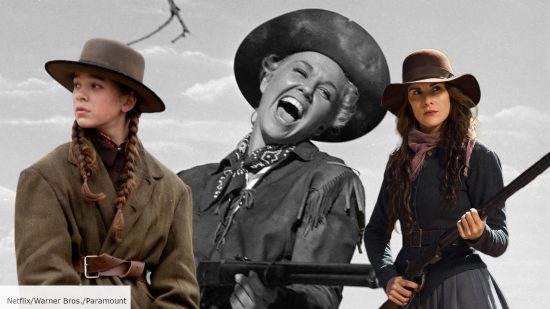When we think of movies set in the Old West, we probably think of the images that have become the backbone of the genre over decades. Two men standing before each other, ready to draw, and interrupted only by the invasion of a lone tumbleweed.
Or perhaps you think of a man disguised in shadow, silhouetted in the doorway of a saloon as he prepares to enter, usually with the intention of fighting or drinking — often both.
These are the iconic visuals that have come to craft many of the best Westerns. But this aesthetic of masculinity might have given birth to the misconception that the Western is a man’s genre, both in audience and in essence.
Of course, many of the greatest stars associated with Westerns have also become known as the paradigm of successful masculinity. The likes of John Wayne and Clint Eastwood have long been considered to be deities of manhood.
The effects of this have rippled down through cinematic generations, accumulating onto the small screen in the form of a sun-beaten Kevin Costner on Yellowstone. Leathery men with whiskey-stained voices and stony expressions are who we expect to see in the saddle.
But to filter the Western down to this exact formula and to dub it a ‘genre for the guys’ would be a disservice, and, most importantly, it would be wrong. The Western is a genre that lends itself not only to the feminine mentality, but way of being too.
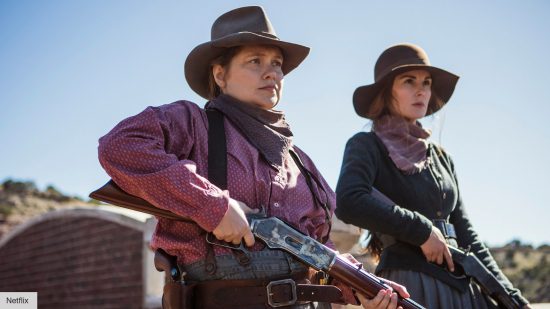
This evolution can be most notably tracked in the more modern takes on the genre, particularly within the neo-Western subculture. With the hardened grit of modern Western tales comes fierce and fresh female characters, such as that of Jane Banner in Wind River, Cornelia Locke in The English, Beth Dutton in the aforementioned Yellowstone, and the entire cast of Netflix’s Godless.
The Netflix series develops its story around the premise of a town in which all the men have been wiped out in a horrific mining accident. A few male characters remain, but for the most part, the adventure rests on the shoulders of its female inhabitants.
Half of them seem to crave the assistance of men, and even go so far as to try and source funding from neighboring towns and their male leaders. The other half have no interest in such pursuits, and are determined to stick it out on their own. Crucially, neither party is shown to be entirely in the right.

Another Western that turns its focus to the female mindset is actually in the form of a story that has long existed; True Grit, which was adapted from the novel of the same name in both 1969 and 2010. The story follows Mattie, a 14-year-old girl who goes on a quest to hunt down the man who killed her father.
Plenty of bloodshed and darkness exist across all three versions of the story, but it is Mattie that remains the most constant element. Even the original novel, penned by Charles Portis, is from her point-of-view.
And while singular-minded viewers might point the finger and reference the film’s end, in which Mattie succumbs to a snakebite and has to be carried to safety by the bounty hunter Rooster Cogburn, they would be missing the point entirely. It is Mattie who begins the journey, and Mattie who ends it by both coming across the very person she sought to seek out, and living out the rest of her life in peace.
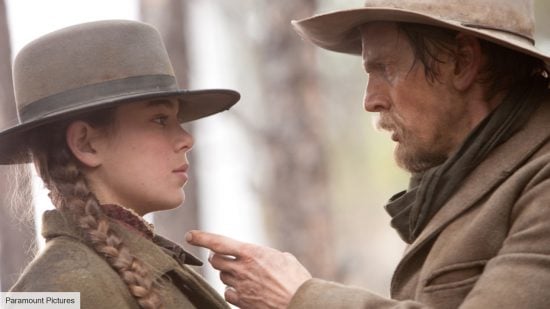
Looking back even further, we can see a lineage of movies that resulted from an intersection of Western movie culture and femininity. Calamity Jane and Johnny Guitar are the two most obvious examples here, combining the rough and tumble nature of the Western with more dazzling flamboyant sensibilities.
Calamity Jane allowed the genre to be shaken up by the musical format and swapped the usual stoicism for camp, while Johnny Guitar sees Joan Crawford pull on the pants and crack her voice through rooms like a whip. Mind you, neither film tries to hide their womanly hearts, with both movies highlighting romantic plot points.
There have been instances where female influence has buried itself so deeply into the film’s core that it becomes the story itself, particularly in modern movies clearly influenced by the genre. For example, Quentin Tarantino’s Django Unchained was a love story at heart.
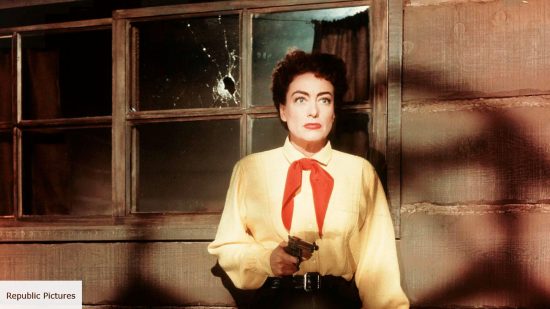
The violence and bloodshed in the film all stem from this basic drive to be reunited with the woman he loves. Equally, George Miller’s Mad Max, a punk-Western, finds focus in its female subjects rather than its titular male hero.
When High Noon was released in 1952, controversy grew at its almost anti-Western schema. The town marshal, Will Kane (played by Gary Cooper), is torn between facing off against an oncoming gang of killers, or ditching town with his pacifist wife (played by the paragon of femininity, Grace Kelly).
In fact, John Wayne himself rejected the role, calling the movie “un-American,” and noted Western director Howard Hawks didn’t agree with the premise at all.
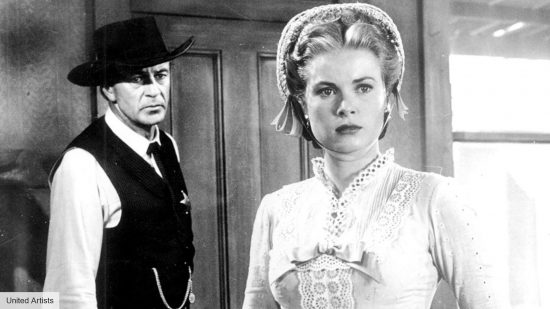
“I didn’t think a good town marshal was going to run around town like a chicken with his head cut off asking everyone to help,” Hawks said [via John Wayne: The Man Behind the Myth by Michael Munn]. “And who saves him? His Quaker wife. That isn’t my idea of a good Western.”
And yet nowadays, High Noon is regarded as one of the best movies ever to come from the genre.
There is inherent romanticism in the spirit of the Western, no matter how gritty. And even when we strip it down to its bare bones, where even the slightest notion of femininity is absent — like The Good, The Bad, The Uglys, and the Unforgivens of the world — it can’t be denied that women have just as much a taste for the genre as their male counterparts.
Let’s not forget, the Western world was built upon the backs of women just as much as it was from men. With legends such as Annie Oakley and the real-life Calamity Jane in the history books to prove it, it’s true to say that there have always been women wandering in the West.
If the frontier calls to you, check out everything we know about the release dates for Yellowstone season 5 part 2, 6666, and Horizon. You can also discover how John Wayne was actually in Star Wars.
Plus, find out how Dallas ran so Yellowstone could fly, and check out our list of all the new movies coming out this year.
